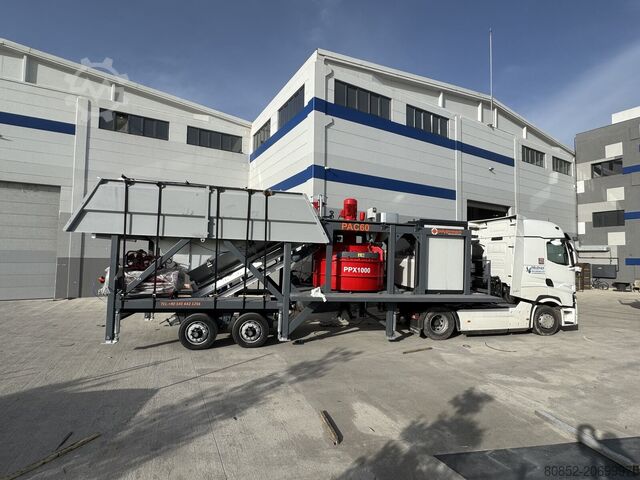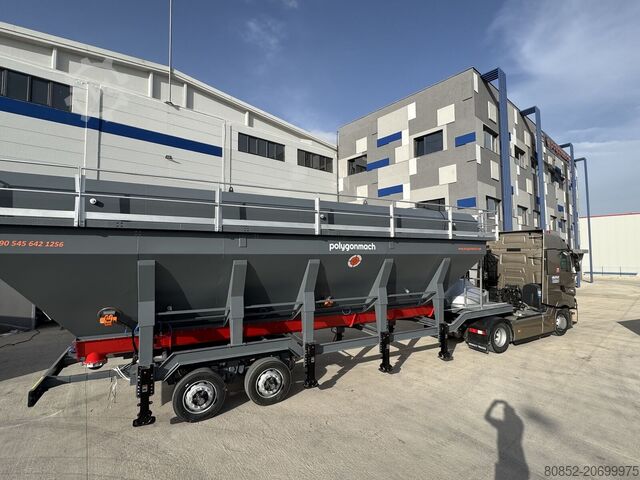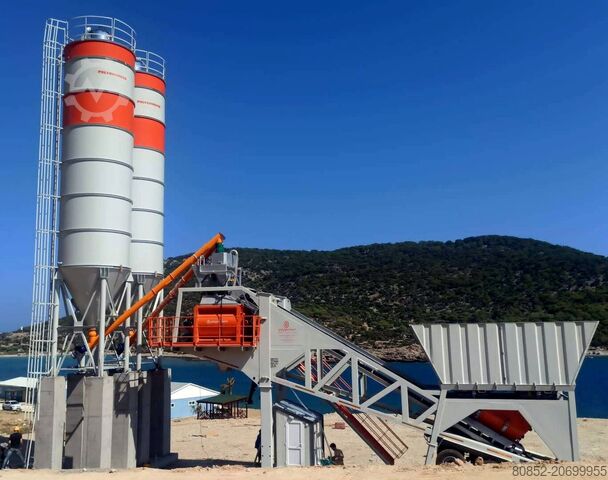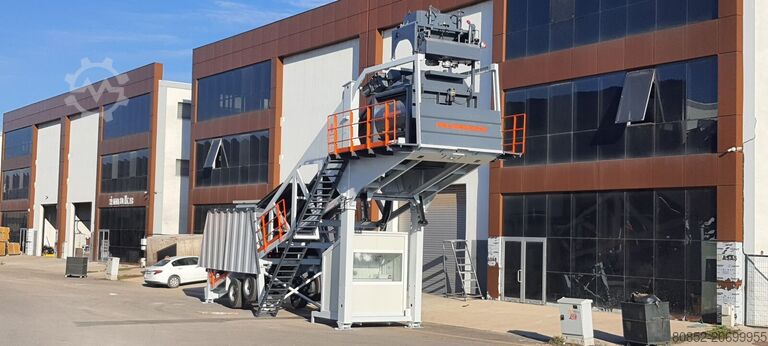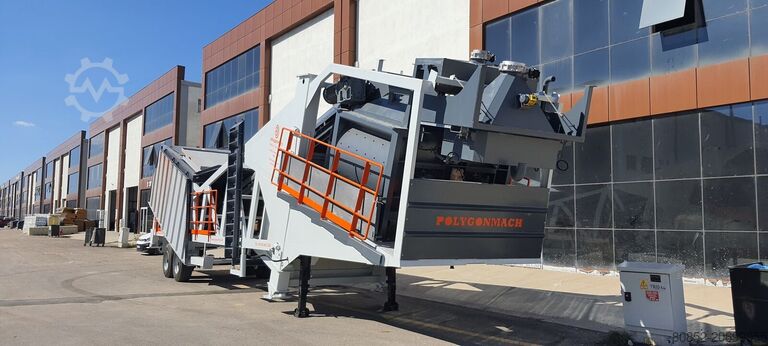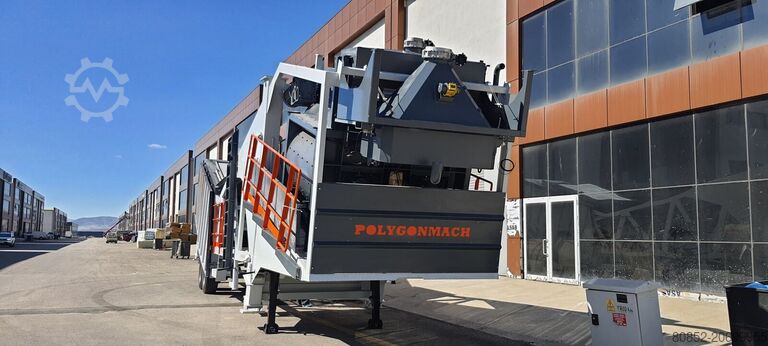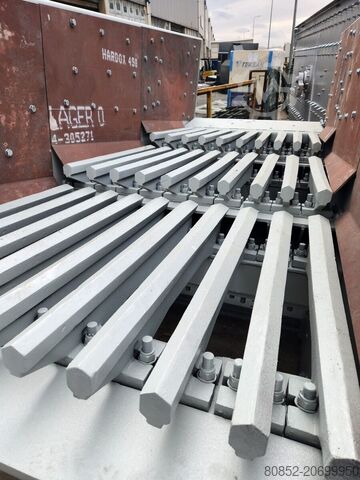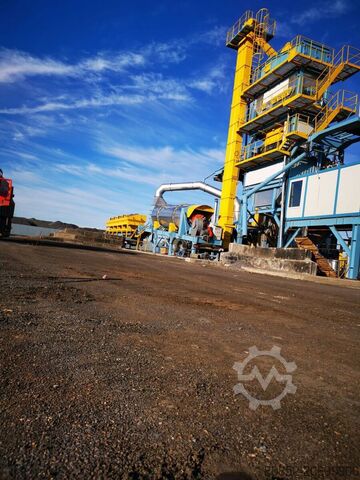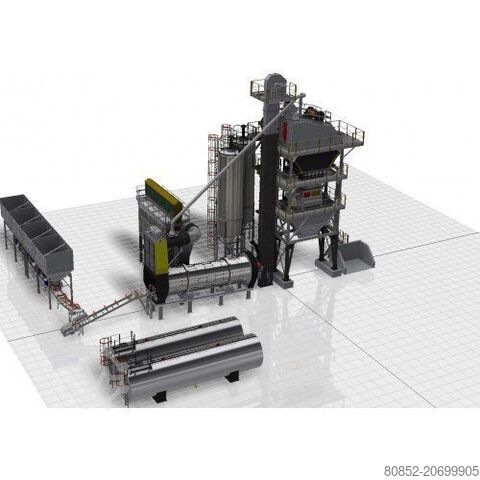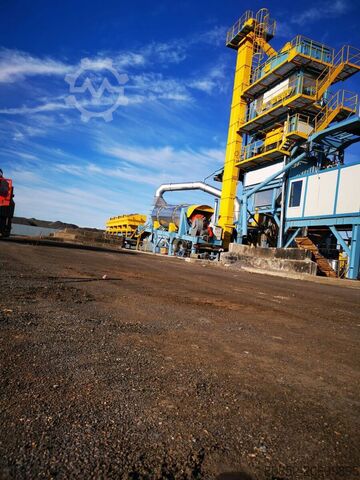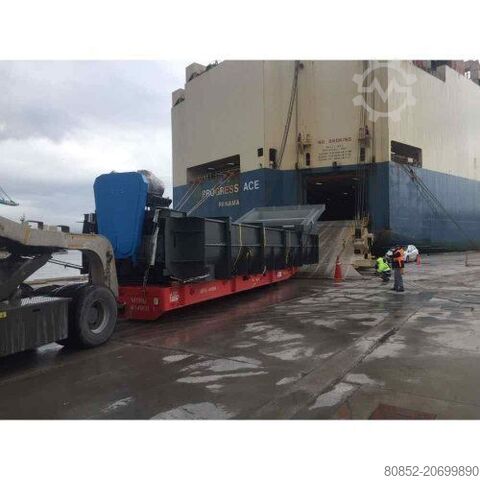Used Operated for sale (24,833)
Sort results
- Lowest price Highest price
- Newest listings Oldest listings
- Shortest distance Farthest distance
- Newest year of manufacture Oldest year of manufacture
- Latest update Oldest update
- Manufacturer A to Z Manufacturer Z to A
- Relevance
- Lowest price
- Price
- Highest price
- Price
- Newest listings
- Release date
- Oldest listings
- Release date
- Shortest distance
- Distance
- Farthest distance
- Distance
- Newest year of manufacture
- Year of construction
- Oldest year of manufacture
- Year of construction
- Latest update
- Update
- Oldest update
- Update
- Manufacturer A to Z
- Manufacturer
- Manufacturer Z to A
- Manufacturer
- designation from A to Z
- Description
- designation from Z to A
- Description
- Model from A to Z
- Model
- Model from Z to A
- Model
- Lowest reference
- Ref.No.
- Highest reference
- Ref.No.
- Shortest runtime
- Runtime
- Longest duration
- Runtime
- Relevance
- Relevance
Listing
 YENİMAHALLE/ ANKARA /
YENİMAHALLE/ ANKARA /
4,897 km
Crusher
Polygonmachtracked mobile cone crusher hp300
Call
Condition: used, Field of application: Mining
Productivity: 100 tph
Discover a world of high-performance crushing solutions with cone crushers - a vital tool in various industries, from mining to aggregate production and from sand manufacturing to recycling. We take pride in utilizing some of the most renowned brands in our operations, including Sandvik, Metso, Terex, and other highly efficient regional options.
Unparalleled Performance, Guaranteed
Cone crushers stand as a testament to precision engineering and innovative design. With a robust construction, high-quality materials, and cutting-edge technology, these crushers guarantee optimal performance and reliability.
Key Components of Cone Crushers
At the heart of every cone crusher, you'll find a powerful and sturdy main shaft and an eccentric that rotates around the main shaft. The crushing happens between the cone-shaped mantle and concave, where material is introduced, crushed to the desired size, and then exits.
The adjustable settings allow you to control the output size, ensuring you always have the right product for your specific needs. The hydraulic tramp release system safeguards the crusher from metal tramp material and provides a smooth flow of material, ensuring steady operation and preventing downtime.
The Advantages of Cone Crushers
Knedjx D A Nmspfx Aansf
1. Versatility: Cone crushers are suitable for a wide range of applications, including quarrying, mining, and recycling. Whether you're dealing with hard rock, soft rock, or sticky material, you can count on our crushers to deliver.
2. High Productivity: With high crushing forces and high power, cone crushers have a high capacity compared to their compact size. This makes them an excellent choice when high yield is a necessity.
Technology: cone
Mobility: stationary
Other characteristics: compact
Capacity: Min.: 100 t/h(61 lb/s)Max.: 800 t/h(490 lb/s)
Listing
 YENİMAHALLE/ ANKARA /
YENİMAHALLE/ ANKARA /
4,897 km
Crusher
Polygonmach1300x1050mm primary jaw crusher
Call
Condition: used, Field of application: Mining
Feeders and screens are paramount. Polygonmach stands at the forefront, offering a wide range of equipment designed to meet your specific needs: Vibrating Feeders, Pan Feeders, Grizzly Feeders, Scalper Screens, Apron Feeders, and Wobbler Feeders.
Polygonmach’s Vibrating Feeders are engineered to ensure a steady flow of material to the crushing or screening machine. They deliver high efficiency, reliability, and precision, ensuring your operations run smoothly and effectively.
Similarly, Polygonmach's Pan Feeders are known for their rugged design and durability, designed to withstand harsh conditions while providing reliable performance. They are perfect for handling the toughest materials, including large, heavy, and sharp rocks and ores.
Meanwhile, Grizzly Feeders are indispensable in the initial stages of crushing processes, particularly in mining applications. They are engineered to handle large, heavy materials, ensuring a continuous, regulated feed to crushers, reducing load and improving efficiency.
Kedox D A Naepfx Aanenf
Polygonmach’s Scalper Screens are designed for high-capacity screening, separating the fine materials from the feed before they reach the crushing stage. This improves efficiency and extends the lifespan of the crusher.
Apron Feeders, renowned for their robust design, are ideal for handling heavy, lumpy, and abrasive materials. They provide a controlled flow of materials to prevent choking of crushers or conveyors.
Lastly, Wobbler Feeders are used for raw material processing in industries like mining and recycling. They ensure a continuous and even material flow, reducing wear and tear on downstream equipment.
Technology: jaw
Mobility: stationary
Other characteristics: high-capacity, fine
Capacity: Max.: 500 t/h(306 lb/s)Min.: 80 t/h(49 lb/s)
Motor power: Max.: 9.8 kW(13.32 hp)Min.: 3 kW(4.08 hp)
net weight: Max.: 26,000 kg(57,320.19 lb)Min.: 8,000 kg(17,636.98 lb)
Listing
 YENİMAHALLE/ ANKARA /
YENİMAHALLE/ ANKARA /
4,897 km
Crusher
PolygonmachPMJI 1100x850mm jaw crusher
Call
Condition: used, power: 169 kW (229.78 HP), Field of application: Mining
Dimensions (LxBxH): 1600 x 320 x 420 cm
Make of engine: Audi
Productivity: 60 tph
Redefining the way you process materials, Polygonmach introduces the PMJI, a state-of-the-art mobile crushing and screening plant on wheels. Engineered specifically for processing middle hardness grade materials such as limestone, riverstone, and dolomite, this unit promises efficiency and performance, wrapped in a compact, transport-friendly design.
Our PMJI unit boasts an impressive production capacity of 60-200 tph, depending on the hardness grade of the materials to be crushed. It offers a maximum feeding size of 550 x 300, 850x650, 1100x850 mm, and a convenient feeding height of 3.8 meters, accommodating diverse operational needs.
The primary configuration comprises a Primary Jaw, Secondary Impactor or Tertiary Impactor, and a 3 decks screen. Its power is sourced from a robust 230 kW motor and a 350 kVA electric generator.
Weighing 46 tonnes, the PMJI mobile plant maintains a compact footprint with dimensions of 16(L) x 3.2(W) x 4.2(L) meters. This lightweight design is perfect for easy transportation and setup. The single chassis on wheels comes equipped with hydraulic opening legs, adding another dimension of convenience and flexibility to your operations.
Kjdpfx Aaex D A I Nonenf
Constructed with high-quality components, the PMJI plant features a feeding hopper with vibrating feeder, PJC-60 Primary Jaw Crusher, PSI-1210-12-15 Secondary Impactor or PTC-1275-100-150 Tertiary Impact Crusher, bypass conveyor, feeding conveyor, 3 decks vibrating screen, feedback conveyor, and fold-up type stockpile conveyors. This combination ensures a seamless operation, minimizing downtime and maximizing productivity.
Technology: jaw
Mobility: mobile
Other characteristics: primary, secondary, tertiary, compact, limostone
Capacity: Min.: 60 t/h(37 lb/s)Max.: 200 t/h(122 lb/s)
Motor power: 230 kW(312.71 hp)
Opening height: 550 mm, 850 mm, 1,100 mm(21.7 in, 33.5 in, 43.3 in)
Opening lenght: 300 mm, 650 mm, 850 mm(11.8 in, 25.6 in, 33.5 in)
Listing
 YENİMAHALLE/ ANKARA /
YENİMAHALLE/ ANKARA /
4,897 km
Crusher
Polygonmach1 PMCC2 jaw and cone crusher mobile
Call
Condition: used, power: 350 kW (475.87 HP), Field of application: Mining
Productivity: 120 tph
Kedpfxox D A I Ao Aanonf
Introducing the Polygonmach PMCC-2, a game-changing mobile crushing and screening plant on wheels with an impressive production capacity of 120-150 tph, depending on the material's hardness grade. Specifically engineered for robust and challenging applications, this comprehensive solution is designed to optimise your operations and maximise your productivity.
The PMCC-2 features an optimum feeding size of 900 x 650 mm and a convenient feeding height of 4.2 meters. This dynamic system boasts of a primary jaw, secondary cone, and a 3 decks screen - a perfect configuration for tackling hard stones with utmost efficiency.
Powered by a total motor capacity of 350 kW, the PMCC-2 caters to all your high-demand crushing needs. Its 550 kVA electric generator requirement ensures a seamless, power-efficient operation. With a compact weight of 56 tons and dimensions of 18 (L) x 3.2 (W) x 4.2 (H) meters, the PMCC-2 exemplifies efficiency packed in a robust, transport-friendly design.
The machine's standout feature is the versatile Metso HP 200 or equivalent model cone crusher. It offers the capability to produce 3 or 4 different fractions simultaneously, ensuring high-quality, precise output. For applications demanding higher fine material ratio or more cubical product, the plant can be equipped with our V-80 mobile sand making plant, which includes a VSI crusher. This configuration, known as PMCV-2, brings added flexibility and performance to your operations.
The Polygonmach PMCC-2’s user-friendly design promises easy mounting and assembling features.
Technology: jaw
Mobility: mobile
Other characteristics: secondary, primary, compact, fine
Capacity: Min.: 120 t/h(73 lb/s)Max.: 150 t/h(92 lb/s)
Motor power: 350 kW(475.87 hp)
Opening height: 850 mm(33.5 in)
Opening lenght: 600 mm(23.6 in)
Listing
 YENİMAHALLE/ ANKARA /
YENİMAHALLE/ ANKARA /
4,897 km
Concrete mixer
Polygonmachtwin shaft mixer
Call
Condition: used, Applicable material: Concrete
Polygonmach offers high variety of concrete, mortar mixers. Pan,planetery, single shaft, twin shaft, cone mixers are our type of mixers. Every mixer type is developed for a concrete type or user application.
Knsdpfxox D A Ivj Aanof
Twin shaft mixers are for high volume of standart concrete production. From 1 to 8m3 capacity abilitiy make this mixer the most preferable type. WE use ni-hard casting arms,paddles,caps,pallets, Specific bearings, automati lubrication system gives long life and easy to spare parts changes.
Twinshaft mixer has got double shaft located paddles, arms, pallets, caps bolted on shaft. The inner mixer construction has wearing and abbrasive ability. Upn material sio2 rate , the lifespan of inner mixer changes. The body and side wearing plates made from Hardox400. Automatic lubrication is installed and programmable on customer request and requirements. Twinshaft mixer vary from 1 to 8m3 on request of customer.
Multiple mixer operations is supported by our projects. This mixer is suitable for high volume of ready mix procductions. Twin shaft mixer has got high rate of homogenity in short time of period.
Mobility: stationary
Other characteristics: automatic
Capacity: Max.: 6,250 l(1,651.1 gal)Min.: 1,000 l(264.2 gal)
Discover more used machines
Listing
 YENİMAHALLE/ ANKARA /
YENİMAHALLE/ ANKARA /
4,897 km
Concrete mixing plant
PolygonmachPAC 60m3/hour site type plant
Call
Condition: used, Applicable material: Concrete
Height: 450 cm
Capacity: 45 m^3/h
Site type concrete batching plants has been issued for easy installation and easy legal procedures. Site batching plants consist of aggregate hoppers, from 2 to 8 pcs differant aggregate can be used such application, belt onveyor or skip hoist to transfer material from hoppers to mixer, mixing section, pan,planetery,twin shaft, single shaft or cone mixer, weighing section.
Site type concrete batcing plant is for very fast location changer customers. After once installation you will never ned to disassembly iy again due to 4.5 full operation height. With 1m3 single shaft and planetery mixer; Polygonmach site plants are best for small scale operations and all type of concrete you need.
Site type plant a kind of mobile type plant however it has got shipment price advantages, all site type plant set consist of concrete transfer belt conveyor, cement silo can go with single container around the world. With axles, towing hook make it easy to trasnport in hours.
Portable batching plants,concrete plants, mixers are used to prepare precious dosed material by pneumatic cylinders and clamshell outlets, afterwards the material is weighed by weighing bin under hoppers. The material has been consisted of sand and aggregate(0-4mm, 4-8mm, 8-16mm, 16-32mm or similar).
For excise material transfer procedure, belt conveyor. The sand and aggregate is waited before discharge to mixer. Additonally, there is weighing bin at top of mixer which consist of cement weighing scale/hopper, water hopper, liqued addtive hoppers.
After sand and gravel discharged into mixer, cement, water,additive, sand and gravel is mixed on recipe based the mixing time chnages as per recipes.
Ksdpfxox D A Iij Aanjnf
Mobility: mobile
Capacity: 60 m³/h
Listing
 YENİMAHALLE/ ANKARA /
YENİMAHALLE/ ANKARA /
4,897 km
Concrete mixing plant
PolygonmachPMC150 150m3 mobile batch plant
Call
Condition: used, Applicable material: Concrete
POLYGONMACH PMC150 150m3 mobile concrete batching plant is a mobile concrete batching plant used to produce large quantities of concrete in large construction projects. These power plants are portable and rebuildable, can work with a wide range of materials and can be used for many construction projects due to their mobility.
The following steps are recommended to use the POLYGONMACH 150m3 mobile concrete batching plant effectively:
Kodpfxex D A Icj Aanjnf
1. Correct positioning: The switchboard should be installed at the easiest access point possible. It must be securely located and engineers must ensure primary resources are in place.
2. Personnel: Plant operators must be experienced and trained to ensure the best results in construction projects. Employees should be trained regularly and use appropriate protective equipment to work inside the plant.
3. Maintenance: Regular maintenance ensures longer life and efficient operation of the plant. This can reduce disruptions and prevent irregularities in mobile switchboard operations.
4. Production: In addition to their productivity, 150m3 mobile concrete batching plants have technologies that enable the production of high quality concrete. Therefore, it is important to use the right concrete mix to ensure efficient production every time.
5. Storage: The produced concrete should be stored correctly and well protected until the time of use. Ideal storage conditions will ensure safe handling and trouble-free use of concrete.
Mobility: mobile
Capacity: 150 m³/h
Listing
 YENİMAHALLE/ ANKARA /
YENİMAHALLE/ ANKARA /
4,897 km
Concrete mixing plant
Polygonmachmobile batching plant self ereted-real mobile-n...
Call
Condition: new, color: blue, Applicable material: Concrete
Empty weight: 28.000 kg
Dimensions (LxBxH): 1550 x 290 x 430 cm
Cargo space capacity: 100.000 l
Capacity: 100 m^3/h
Water tank: 600
Knedpfxsx D A Hxe Aanjf
AGGREGATE STORAGE HOPPER – 4 x 12 m3
AGGREGATE WEIGHING HOPPER – 2 m3
AGGREGATE TRANSFER CONVEYOR – 800 x 11.000 mm
TWIN SHAFT MIXER WITH LUBRICATION SYSTEM – 2 m3
CEMENT WEIGHING HOPPER - 600 kg
WATER WEIGHING HOPPER – 300 lt
ADDITIVE WEIGHING HOPPER – 20 lt
AIR COMPRESSOR – 300 lt
CONTROL CABINET WITH AIR CONDITIONER
CONTROL PANEL, PC AND PLOTTER, POWER PANEL
MOBILE CHASSIS
CEMENT SILO – 100 Tons capacity
SCREW CONVEYOR – Ø219 * 8.000 mm
SILO TOP FILTER – 14 m2 SURFACE AREA
SAFETY VALVE, LEVEL INDICATORS, SILO ACCESSORIES
GENERAL FEATURES OF THE PLANT
Plant Capacity : 100 m3/h
Control Type : Full Automatic
Mixer : 3000/2000 Twin shaft Mixer, 2 m3 wet concrete capacity.
Weight of the plant : 28 Tons without cement silo.
Plant Sizes : 16.5 (L) x 2.8 (W) x 4.2 (H) meters
Total Motor Power : 165 kW Screw conveyors including .
Voltage / Frequency : 380 V / 50 Hz
Required area for installation : 300 m2 (excluding storage areas, truck park area and administrative building)
No of operator to work the plant : 1
Painting : 1 layer of anticorrosive paint, 2 layers of FINAL COAT EPOXY PAINT , total paint thickness : 140 microns
Listing
 YENİMAHALLE/ ANKARA /
YENİMAHALLE/ ANKARA /
4,897 km
Crusher
PolygonmachPMCC3 jaw crusher 1400*1100mm 185kw
Call
Condition: used, Field of application: Mining
Introducing the formidable mobile crushing and screening plant on wheels by Polygonmach, a blend of power, innovation, and versatility. Designed to withstand challenging conditions and deliver exceptional results, this mobile crusher is an exceptional choice for any high-volume crushing and screening application.
Knodox D A Hrjpfx Aansf
Our design, built in a two-chassis format, combines optimum functionality and power in a compact yet robust package. The first chassis is equipped with a vibrating feeder, PJC-110 Primary Jaw Crusher, bypass conveyor for soil extraction, feeding conveyor, and wheeled mobile chassis with hydraulic legs. Our Dust Removing System ensures your operation stays clean and efficient, demonstrating our commitment to both productivity and the environment.
The second frame is fitted with a METSO HP 300 cone crusher, vibrating screen with 3 or 4 decks, feedback conveyor from vibrating screen to cone crusher, and fold-up type stockpile conveyors. This frame, too, comes with wheeled mobile chassis, ensuring easy transportation and positioning.
Boosting a total motor power of 500 kW and an electric generator requirement of 700 kVA, our system provides an impressive production capacity of 250-300 tph, with a maximum feeding size of 1100*850mm The convenience of a 4.5 meters feeding height adds to the seamless operation of this powerful system.
Further showcasing our attention to detail, the system comes with a state-of-the-art Automation System featuring PLC and a remote controller for easy and efficient operation. With the additional optional diesel electric generator set, this plant is fully prepared to meet all your operational needs.
Technology: jaw
Mobility: mobile
Other characteristics: primary, compact
Capacity: Max.: 300 t/h(184 lb/s)Min.: 250 t/h(153 lb/s)
Motor power: 500 kW(679.81 hp)
Opening height: 1,100 mm(43.3 in)
Opening lenght: 850 mm(33.5 in)
Listing
 YENİMAHALLE/ ANKARA /
YENİMAHALLE/ ANKARA /
4,897 km
Concrete mixing plant
PolygonmachPMC-120
Call
Condition: new, power: 154 kW (209.38 HP), fuel type: hybrid, color: blue, Year of construction: 2020, Type of fuel: Hybrid (electric and petrol)
Applicable material: Concrete
Empty weight: 38.000 kg
Dimensions (LxBxH): 1600 x 280 x 420 cm
Make of engine: Siemens
Cargo space capacity: 135.000 l
Capacity: 135 m^3/h
Water tank: 1200
UNITS
AGGREGATE STORAGE HOPPER – 4 x 30 m3 1
AGGREGATE WEIGHING BELT CONVEYOR 1000x13000mm 1
AGGREGATE TRANSFER CONVEYOR – 1000 x 11.000 mm 1
TWIN SHAFT MIXER WITH LUBRICATION SYSTEM – 3 m3 1
CEMENT WEIGHING HOPPER - 1500 kg 1
WATER WEIGHING HOPPER – 1000 lt 1
ADDITIVE WEIGHING HOPPER – 50 lt 1
AIR COMPRESSOR – 800 lt 1
CONTROL CABINET WITH AIR CONDITIONER 1
CONTROL PANEL, PC AND PLOTTER, POWER PANEL 1
MOBILE CHASSIS -DOUBLE 1
GENERAL FEATURES OF THE PLANT
Plant Capacity : 120-135 m3/h
Control Type : Full Automatic
Mixer : 4500/3000 Twin shaft Mixer, 3 m3 wet concrete capacity.
Weight of the plant : 45 Tons without cement silo.
Plant Sizes : 16.5 (L) x 2.8 (W) x 4.2 (H) metersx2
Total Motor Power : 215 kW Screw conveyors including .
Voltage / Frequency : 380 V / 50 Hz
Required area for installation : 300 m2 (excluding storage areas, truck park area and administrative building)
No of operator to work the plant : 1
Painting : 1 layer of anticorrosive paint, 2 layers of FINAL COAT EPOXY PAINT , total paint thickness : 140 microns
Number of trucks for transport : 1 pcs Head-Truck w+ 2 pcs Tented Truck
PLANT DETAIL
BRAND POLYGON
MODEL POLYGON PMC120 CONCRETE PLANT
PLANT MODEL CONCRETE PLANT WITH TWINSHAFT MIXER
PLANT CAPACITY Fresh Concrete 120 m3/Hour
AGGREGATE BUNKER CAPACİTY 4x30= 120 M³
CEMENT WEIGHT CAPACITY 1500 kg
WATER WEIGHT CAPACITY 1000 kg
MIXER CAPACITY
4500-3000 LT TWINSHAFT MIXER( PMX 3000)
Kedpfx Aex D A Ezsanonf
TOTAL ENGİNE POWER 215 Kw
NUMBER OF MIXER ENGINES 55x2 kw GAMAK
VOLTAGE 380V - 50 Hz
1.9 MIXER TECHNICAL SPECIFICATION
Feature Value/Unit Capacity
Loading Capacity m3/h 3
Fresh Concrete Capacity m3 3
Capacity Lt 4500
Gearbox /Engine KW 55x2 ERMAKSAN/GAMAK 1500 rpm/m
Sıde wears mm 8 HARDOX
Mixer Body Wear m3 10 HARDOX
Number Of Scraper pcs 4
Number Of Mixing Arms pcs 14
Scraper and Mıxıng Pallets mm 32 mm NI-HARD-4
Engine Power Kw 110
Water Distributer Available
Pneumatic Discgarge Cover Kw Available
Maintenance and Safety Valve Available
Emergency Button Available
Mixer Cover System Hydraulic
Cover Open/Close Sensor Available
Listing
 YENİMAHALLE/ ANKARA /
YENİMAHALLE/ ANKARA /
4,897 km
Asphalt mixing plant
Polygonmach320tph asphalt plant
Call
Condition: used, Polygonmach stationary hot mix asphalt plant refers to an asphalt plant that is fixed in one location and produces hot mix asphalt continuously. It is not portable and is typically used for large-scale asphalt production projects. Capacity vary from 60-400 tph.
The functions of Polygonmach stationary asphalt plant includes:
Aggregate Storage and Handling: The plant has storage bins or silos to store various sizes of aggregates. These aggregates are sorted and fed into the plant for processing.
Drying and Heating: The aggregates are dried and heated in a drum or a dryer to remove moisture and bring them to the desired temperature for proper asphalt mixing.
Asphalt Binder Storage and Heating: The plant has storage tanks for storing the asphalt binder, which is heated to a specified temperature before mixing with the aggregates.
Mixing: The heated aggregates and asphalt binder are mixed together in the plant to produce the hot mix asphalt. The mixing can be done in a batch or continuous process, depending on the type of plant.
Storage and Loadout: The hot mix asphalt is stored in silos or storage bins until it is ready for loadout onto trucks for transportation to the construction site.
Usage areas for Polygonmach stationary asphalt plants include road construction, highway projects, airport runways, parking lots, and other large-scale asphalt paving applications.
Knjdex D A D Repfx Aansf
The operation of Polygonmach stationary asphalt plant typically involves the following steps:
Aggregates are stored in the designated bins/silos of the plant.
The aggregates are fed into the drying drum, where they are heated and dried.
The heated aggregates are then transported to the mixing unit.
Options: stationary, continuous
Capacity: Max.: 400 t/h(245 lb/s)Min.: 60 t/h(37 lb/s)
Listing
 YENİMAHALLE/ ANKARA /
YENİMAHALLE/ ANKARA /
4,897 km
Asphalt mixing plant
Polygonmach280tph asphalt plant
Call
Condition: used, Polygonmach stationary hot mix asphalt plant refers to an asphalt plant that is fixed in one location and produces hot mix asphalt continuously. It is not portable and is typically used for large-scale asphalt production projects. Capacity vary from 60-400 tph.
The functions of Polygonmach stationary asphalt plant includes:
Aggregate Storage and Handling: The plant has storage bins or silos to store various sizes of aggregates. These aggregates are sorted and fed into the plant for processing.
Drying and Heating: The aggregates are dried and heated in a drum or a dryer to remove moisture and bring them to the desired temperature for proper asphalt mixing.
Asphalt Binder Storage and Heating: The plant has storage tanks for storing the asphalt binder, which is heated to a specified temperature before mixing with the aggregates.
Mixing: The heated aggregates and asphalt binder are mixed together in the plant to produce the hot mix asphalt. The mixing can be done in a batch or continuous process, depending on the type of plant.
Storage and Loadout: The hot mix asphalt is stored in silos or storage bins until it is ready for loadout onto trucks for transportation to the construction site.
Usage areas for Polygonmach stationary asphalt plants include road construction, highway projects, airport runways, parking lots, and other large-scale asphalt paving applications.
The operation of Polygonmach stationary asphalt plant typically involves the following steps:
Aggregates are stored in the designated bins/silos of the plant.
The aggregates are fed into the drying drum, where they are heated and dried.
The heated aggregates are then transported to the mixing unit.
Options: stationary, continuous
Capacity: Max.: 400 t/h(245 lb/s)Min.: 60 t/h(37 lb/s)
Kodpfx Aaex D A Ebjnsnf
Listing
 YENİMAHALLE/ ANKARA /
YENİMAHALLE/ ANKARA /
4,897 km
Asphalt mixing plant
Polygonmach400 tph tower type asphalt plant
Call
Condition: used, Year of construction: 2024, Polygonmach stationary hot mix asphalt plant refers to an asphalt plant that is fixed in one location and produces hot mix asphalt continuously. It is not portable and is typically used for large-scale asphalt production projects. Capacity vary from 60-400 tph.
The functions of Polygonmach stationary asphalt plant includes:
Aggregate Storage and Handling: The plant has storage bins or silos to store various sizes of aggregates. These aggregates are sorted and fed into the plant for processing.
Drying and Heating: The aggregates are dried and heated in a drum or a dryer to remove moisture and bring them to the desired temperature for proper asphalt mixing.
Asphalt Binder Storage and Heating: The plant has storage tanks for storing the asphalt binder, which is heated to a specified temperature before mixing with the aggregates.
Mixing: The heated aggregates and asphalt binder are mixed together in the plant to produce the hot mix asphalt. The mixing can be done in a batch or continuous process, depending on the type of plant.
Storage and Loadout: The hot mix asphalt is stored in silos or storage bins until it is ready for loadout onto trucks for transportation to the construction site.
Usage areas for Polygonmach stationary asphalt plants include road construction, highway projects, airport runways, parking lots, and other large-scale asphalt paving applications.
The operation of Polygonmach stationary asphalt plant typically involves the following steps:
Aggregates are stored in the designated bins/silos of the plant.
The aggregates are fed into the drying drum, where they are heated and dried.
The heated aggregates are then transported to the mixing unit.
Options: stationary, continuous
Knedpfsx D A D Djx Aanef
Capacity: Max.: 400 t/h(245 lb/s)Min.: 60 t/h(37 lb/s)
Listing
 YENİMAHALLE/ ANKARA /
YENİMAHALLE/ ANKARA /
4,897 km
Polygonmach PSW9060 fine material washer/ screw washer
PolygonmachPSW9060 fine material washer/ screw washer
Call
Condition: used, Colour: Red
Field of application: Mining
Take your material processing capabilities to the next level with Polygonmach’s Fine Material Washer. Known for their engineering excellence and innovative solutions, Polygonmach has yet again pushed the boundaries with their advanced Spiral Classificator and Screw Washer. Designed for maximum efficiency and performance, this system offers an unmatched processing solution for a variety of materials.
The Polygonmach Fine Material Washer, also known as Spiral Classificator or Screw Washer, is a powerful tool for sand classification and dewatering duties. It is specially designed for washing, classifying, and dewatering fine material as well as for scrubbing and expelling clays and silts from raw materials.
The design offers a high level of cleaning, improving the quality of your end product. While it is mainly used for cleaning and handling of sand and gravel, it also works with many other minerals. When you need the highest level of cleaning, this washer is your go-to solution.
Ksdjx D A Dwepfx Aansnf
The Polygonmach Fine Material Washer's superior design ensures optimal performance. It features replaceable, wear-resistant paddles that enhance the machine’s longevity. The system also comes with an adjustable weir and water volume to meet your specific washing needs.
To achieve the desired results, the Polygonmach Fine Material Washer is equipped with a heavy-duty design and construction. It is highly efficient, delivering precision, and accuracy in its operations. Despite its robust construction, it is easy to maintain and has low operational costs.
Listing
 YENİMAHALLE/ ANKARA /
YENİMAHALLE/ ANKARA /
4,897 km
Concrete mixing plant
PolygonmachPCC60 compact skip hoist concrete plant
Call
Condition: used, Applicable material: Concrete
A POLYGONMACH PCC60 60 M3 compact concrete batching plant, if high quality and well designed, can provide users with many advantages:
1. Thanks to its high production capacity, it provides a fast supply of concrete used in large and complex construction projects.
2. Depending on its technical characteristics, especially mold, pump, etc. When used, it simplifies the concrete pouring works and speeds up the works without sacrificing quality.
3. Thanks to the automatic control systems, the concrete quality is ensured at a consistently high level. This ensures excellent results in construction projects.
4. Thanks to its compact design, it takes up little space and is easy to transport, install and disassemble. Thus, users can quickly move these exchanges from one place to another.
Knsdpfx Aaox D A Ayenjf
5. With energy efficient and environmentally friendly design options, operating costs are lowered, thereby saving more money for users.
6. If properly cared for, it is long lasting and generally delivers a high quality product.
Because of all this, a high-quality and well-designed compact concrete batching plant with a capacity of 60 M3 is preferred by construction companies and contractors.
A POLYGONMACH 60 M3 compact concrete batching plant can use different types of additives, cements and aggregates depending on its type and properties. These factors determine the desired properties of concrete.
Cement: The cements generally used in concrete batching plants are ordinary ported cements, blast furnace slag cements and reactive powder additive cements. These different types of cement can change various properties of concrete.
Mobility: stationary
Other characteristics: compact, automatic
Capacity: 60 m³/h(2,118.88 ft³/h)
Listing
 YENİMAHALLE/ ANKARA /
YENİMAHALLE/ ANKARA /
4,897 km
Crusher
Polygonmach1-PMCC1- mobile jaw and cone crusher
Call
Condition: used, Field of application: Mining
In the realm of heavy-duty machinery, Polygonmach leads with its revolutionary mobile crushing and screening plant on wheels. This unique mobile crusher, consisting of a jaw crusher measuring 600*380mm and a second chassis equipped with the renowned Metso hp100, is designed for the toughest applications.
These units aren't merely a combination of superior technology and robustness but also exhibit a deep understanding of their user's challenging requirements. With the inclusion of a Sandvik ch430, Terex, or locally equivalent cone crusher, Polygonmach stands at the apex of engineering excellence, providing highly efficient, mobile, and flexible solutions.
The three-deck vibrating screen, a vital component of this mobile plant, plays an instrumental role in classifying and separating materials, ensuring you receive the highest quality output. Its seamless integration with the crushers guarantees a streamlined operation, reducing downtime and optimizing production rates.
Ksdpex Dzb Ujfx Aanjnf
What sets this Polygonmach mobile crusher apart is its closed-circuit configuration, specifically designed for processing hard stones. Unlike conventional crusher plants, the closed-circuit system ensures precise material grading, reduced fines, and enhanced end-product quality. The inclusion of the single chassis in this design further optimizes the machine's mobility and ease of setup.
The array of belt conveyors integrated into the mobile crusher system adds another dimension of flexibility to the operation. Their role in material transportation is critical to the overall efficiency and speed of the operation, ensuring continuous and uniform feed to the crusher.
Technology: jaw
Mobility: mobile
Capacity: Min.: 60 t/h(37 lb/s)Max.: 80 t/h(49 lb/s)
Motor power: 220 kW(299.12 hp)
Opening height: 550 cm(216.5 in)
Opening lenght: 300 cm(118.1 in)
Listing
 YENİMAHALLE/ ANKARA /
YENİMAHALLE/ ANKARA /
4,897 km
Crushing plant
PolygonmachPMST mobile tertiary crusher
Call
Condition: used, Year of construction: 2024, Field of application: Mining
Dimensions (LxBxH): 1500 x 320 x 420 cm
Polygonmach is set to revolutionize the mobile crushing industry with its PMST Mobile Sand Making Plant, a state-of-the-art solution for the efficient processing of a variety of materials, regardless of their hardness level. Be it granite, basalt, dolomite, gabbro, or limestone, the PMST produces consistently satisfying results.
With a production capacity ranging from 80-250 tph, this powerful machine caters to diverse processing needs. Its maximum feeding size capacity spans from 80-180mm and has a feeding height of 3.8 meters. The PMST's total motor power ranges between 220-320 kW, requiring an electric generator of 550-850 kVA for smooth operation. This compact machine weighs 36 tonnes and measures 15(L) x 3.2(W) x 4.2(L) meters, and comes as a single chassis on wheels equipped with hydraulic opening legs.
The PMST Mobile Sand Making Plant features a series of high-performance components:
Feeding Hopper with vibrating feeder
Feeding Conveyors
Vibrating Screen with 3 decks
Feedback Conveyor
Stockpile Conveyors
Ksdex Dzbuepfx Aanjnf
Mobile chassis with hydraulic legs
Automation System with PLC and remote controller
Dust Removing System
Electric Generator Set (Optional)
Should the need arise, it is possible to affix a diesel electric generator set to the chassis of the plant.
User-friendly and easy to assemble, the PMST can be operational within a few hours of arrival at the job site. On request, the feeding hopper covers and stockpile conveyors can be equipped with a hydraulic opening mechanism, allowing the entire system to transition to working position without the need for any external equipment.
Operational mode: manual
Technology: pressure
Other characteristics: mobile
Listing
 YENİMAHALLE/ ANKARA /
YENİMAHALLE/ ANKARA /
4,897 km
Crusher
Polygonmachjaw crusher 1100*850mm
Call
Condition: used, power: 200 kW (271.92 HP), Field of application: Mining
Empty weight: 6.000 kg
Productivity: 60 tph
When it comes to selecting the right crusher for your operations, jaw crushers stand out with their unique advantages. Designed for primary reduction of hard and abrasive materials, these machines ensure efficient, cost-effective crushing, contributing significantly to your operational productivity.
One of the core benefits of jaw crushers lies in their unmatched crushing power. They are equipped with robust and durable jaws that crush the toughest rocks and minerals into smaller, manageable sizes. This makes them the prime choice for primary crushing applications in mining, construction, recycling, and many more industries.
A key feature of jaw crushers is their simplicity of design and ease of operation. They utilize a two-plate system where one plate remains stationary while the other moves back and forth. This simple yet effective design minimizes maintenance needs and reduces downtime, boosting overall productivity.
Jaw crushers also excel in terms of flexibility. They come in various sizes and capacities, catering to both small-scale operations and large, industrial applications. The adjustable settings allow control over the output size, meeting specific project requirements.
Finally, these machines are built to last. High-quality materials and components ensure that your jaw crusher withstands the test of time, maintaining optimal performance even under the most strenuous conditions.
Ksdpfxsx Dx D Ho Aansnf
In summary, jaw crushers offer a combination of power, simplicity, flexibility, and durability that makes them an excellent choice for any crushing operation. Invest in a jaw crusher today and experience the benefits firsthand.
Technology: jaw
Mobility: stationary
Other characteristics: primary
Capacity: Min.: 60 t/h(37 lb/s)Max.: 140 t/h(86 lb/s)
Motor power: Min.: 30 kW(40.79 hp)Max.: 200 kW(271.92 hp)
Opening height: Min.: 610 mm(24 in)Max.: 1,400 mm(55.1 in)
Opening lenght: Min.: 380 mm(15 in)Max.: 1,100 mm(43.3 in)
net weight: Min.: 6,000 kg(13,227.74 lb)Max.: 52,000 kg(114,640.38 lb)
Listing
 YENİMAHALLE/ ANKARA /
YENİMAHALLE/ ANKARA /
4,897 km
Concrete mixing plant
PolygonmachPAC 45m3/hour mobile concrete plant
Call
Condition: used, Applicable material: Concrete
Capacity: 30 m^3/h
Site type concrete batching plants has been issued for easy installation and easy legal procedures. Site batching plants consist of aggregate hoppers, from 2 to 8 pcs differant aggregate can be used such application, belt onveyor or skip hoist to transfer material from hoppers to mixer, mixing section, pan,planetery,twin shaft, single shaft or cone mixer, weighing section.
Site type concrete batcing plant is for very fast location changer customers. After once installation you will never ned to disassembly iy again due to 4.5 full operation height. With 0,75m3 planetery mixer; Polygonmach site plants are best for small scale operations and all type of concrete you need.
Site type plant a kind of mobile type plant however it has got shipment price advantages, all site type plant set consist of concrete transfer belt conveyor, cement silo can go with single container around the world. With axles, towing hook make it easy to trasnport in hours.
Portable batching plants,concrete plants, mixers are used to prepare precious dosed material by pneumatic cylinders and clamshell outlets, afterwards the material is weighed by weighing bin under hoppers. The material has been consisted of sand and aggregate(0-4mm, 4-8mm, 8-16mm, 16-32mm or similar).
For excise material transfer procedure, belt conveyor. The sand and aggregate is waited before discharge to mixer. Additonally, there is weighing bin at top of mixer which consist of cement weighing scale/hopper, water hopper, liqued addtive hoppers.
After sand and gravel discharged into mixer, cement, water,additive, sand and gravel is mixed on recipe based the mixing time chnages as per recipes.
Knsdpfx Aox Dx Dyoanjf
Mobility: mobile
Capacity: 45 m³/
Listing
 YENİMAHALLE/ ANKARA /
YENİMAHALLE/ ANKARA /
4,897 km
Concrete mixing plant
PolygonmachPolygonmach PVB150 Mobile Cold Asphalt & Emulsi...
Call
Condition: used, Applicable material: Concrete
Cargo space capacity: 60.000 l
Polygonmach PVB150 Mobile Cold Asphalt & Emulsion Mixing Plant
Turkey’s First Fully Mobile Dual-Mode Plant!
Polygonmach PVB150 is a cutting-edge mobile solution specially designed for cold asphalt production, emulsion-based mixes, and road maintenance materials. This powerful system supports Volumetric and Batch operation modes — all in one compact and mobile unit.
Whether you’re building rural roads, patching highways, or producing environmentally friendly mixes, the PVB150 delivers performance, flexibility, and cost savings directly to your jobsite.
⸻
✅ Specialized for Cold Mix & Emulsion Applications
• Cold Asphalt Mixing Mode: Up to 200 m³/hour on-demand production, perfect for binderless and emulsion-stabilized mixes
• Emulsion Mixing Mode: Precise control for polymer-modified bitumen and emulsified asphalt blends
• Low-Temperature Operation: Energy-efficient and ideal for off-grid, rural, or urban environments
• Recycling-Ready: Supports RAP (recycled asphalt pavement) and eco-friendly binder integration
⸻
? Advanced Design – Built for Road Projects
• 3x8 m³ aggregate hoppers, 5-ton cement/emulsion silo, and integrated water/additive tanks
• High-precision weighing & dosing for binder, aggregate, and water
• Fully automatic or manual operation via smart control panel
Ksdpfex Dx Dtex Aanonf
• Mobile frame with self-lifting chassis – set up in 10 minutes
• On-site production = zero material waste, no transportation delays
⸻
?️ Multiple Functions – One Mobile Solution
In addition to Cold Asphalt and Emulsion, PVB150 can also operate as:
• Mechanical Stabilization Plant
• Soil Compound Mixing Plant
• Standard Concrete Plant (Volumetric + Batch Modes)
⸻
? Mobile | Sustainable | High-Performance | Made in Turkey
Say goodbye to fixed-site plants and expensive transport.
With Polygonmach PVB150, your site becomes your plant.
⸻
? Contact us today and take control of your road projects!
?
?
?
Listing
 YENİMAHALLE/ ANKARA /
YENİMAHALLE/ ANKARA /
4,897 km
Concrete mixing plant
PolygonmachPMC100 90m3 mobile batching plant- self serecti...
Call
Condition: used, Applicable material: Concrete
Cargo space capacity: 100.000 l
POLYGONMACH 100M3 mobile concrete batching plants, which do not require a self-installed crane, are portable concrete batching plants that can be installed without the need for a crane. They are generally preferred for small or medium-sized construction works. They do not require a crane.
POLYGONMACH 100m3 produces high-quality, high-strength concrete like mobile concrete plants, but with the advantage of a faster installation process and greater portability.
100m3 mobile concrete batching plants offer many benefits to their users if they are of high quality and well-designed:
1. High efficiency: A high-quality and well-designed 100m3 mobile concrete plant works with high efficiency. This ensures that construction projects are completed on time and reduces costs.
2. High quality concrete production: The high quality concrete production option enables users to produce many different types of concrete in accordance with their needs.
3. Easy and fast installation: Mobile concrete batching plants are easily relocated due to their portability and are known for their fast installation times. Thus, it helps businesses save time.
4. Minimum maintenance and operating costs: A high-quality and well-designed 100m3 mobile concrete batching plant operates with minimal maintenance and operating costs. The use of high-quality components extends the life of the equipment and lowers operating costs.
5. Environmentally friendly: Mobile concrete batching plants can be equipped with environmentally friendly technologies. This helps to reduce environmental pollution and protect the environment.
Knsdsx Dh Tdopfx Aanef
Mobility: mobile
Capacity: 100 m³/h(3,531.47 ft³/h)
Trust Seal
Dealers certified through Machineseeker

Listing
 YENİMAHALLE/ ANKARA /
YENİMAHALLE/ ANKARA /
4,897 km
Screener
Polygonmach2400x6000mm 4 decks inclined vibrating screen
Call
Condition: used, Field of application: Mining
Knedpex Dh S Tofx Aanof
Experience unparalleled efficiency with Polygonmach's Mobile Dewatering Screen and Hydrocyclone, part of our revolutionary range of mobile crushing and screening plants on wheels. Polygonmach, an industry-leading brand, is committed to redefining the standards of construction and mining industries with its cutting-edge technologies.
The Polygonmach Mobile Dewatering Screen and Hydrocyclone is an exceptional solution that offers high-efficiency classification and separation of materials, a must-have for operations dealing with a variety of mineral ores, aggregates, and recyclables.
This mobile system is crafted to effectively dewater and separate fines, providing a consistent, saleable product. The dewatering screen works by removing the water from your washed sand and other materials, while the hydrocyclone ensures precise and efficient classification and separation.
Our hydrocyclone technology ensures precise and rapid grading. Its centrifugal motion enables it to separate heavier particles, improving product purity. This is paired with our dewatering screen that offers high-frequency vibration, ensuring effective dewatering for a dry, high-quality end product.
As part of our ethos to deliver user-friendly solutions, the Mobile Dewatering Screen and Hydrocyclone system is designed for easy operation and maintenance. It comes with hydraulic legs for convenient positioning and a robust design capable of withstanding challenging working conditions.
What sets the Polygonmach mobile system apart is its ability to deliver high throughput and efficiency while ensuring the quality of the final product.
Applications: construction
Type: centrifugal, mobile
Material: for bulk materials
Other characteristics: high-frequency, dewatering, high throughput
net weight: Min.: 6,100 kg(13,448 lb)Max.: 10,200 kg(22,487 lb)
engine power: Min.: 3.6 kW(4.89 hp)Max.: 9 kW(12.24 hp)
Listing
 YENİMAHALLE/ ANKARA /
YENİMAHALLE/ ANKARA /
4,897 km
Polygonmach 2400x7000mm double shaft/ blade mill 400 tph log washer
Polygonmach2400x7000mm double shaft/ blade mill 400 tph lo...
Call
Condition: used, Field of application: Mining
Explore the superior processing capabilities of the Polygonmach Coarse Material Washer, a state-of-the-art solution designed to exceed expectations in processing sand and gravel. Polygonmach, a leading name in the industry, constantly pushes the boundaries of innovation to bring high-quality, reliable solutions to businesses.
The Polygonmach Coarse Material Washer is a fundamental tool in the industry, specializing in the thorough cleaning, classification, and dewatering of coarser fractions. Designed to handle robust materials such as sand and gravel, it significantly enhances the quality of your output, leading to increased customer satisfaction and business growth.
Kodex Dh S Hepfx Aanjnf
Built with high-capacity processing in mind, our Coarse Material Washer employs powerful scrubbing technology. This action facilitates the removal of impurities, thus unlocking the true value of your raw materials. The result is high-quality end products that meet rigorous industry standards.
One of the key features of the Polygonmach Coarse Material Washer is its replaceable heavy-duty paddles. These are engineered to withstand the harsh environment, thereby increasing machine lifespan and reducing maintenance costs. The robust design is well-suited to large-scale operations, delivering high-volume processing efficiently.
Moreover, it comes with an adjustable weir plate that offers control over the water volume and the fines. This flexibility empowers you to produce materials of desired specification and moisture content, guaranteeing consistent product quality.
The Coarse Material Washer from Polygonmach is not only highly functional but also user-friendly.
Listing
 YENİMAHALLE/ ANKARA /
YENİMAHALLE/ ANKARA /
4,897 km
Concrete mixing plant
PolygonmachPAC 30m3 hour site type batching plant- ultra m...
Call
Condition: used, Applicable material: Concrete
Ksdpfx Aajx A R Eaonjnf
Capacity: 30 m^3/h
Site type concrete batching plants has been issued for easy installation and easy legal procedures. Site batching plants consist of aggregate hoppers, from 2 to 8 pcs differant aggregate can be used such application, belt onveyor or skip hoist to transfer material from hoppers to mixer, mixing section, pan,planetery,twin shaft, single shaft or cone mixer, weighing section.
Site type concrete batcing plant is for very fast location changer customers. After once installation you will never ned to disassembly iy again due to 4.5 full operation height. With 0,5 and 0,75m3 single shaft and planetery mixer; Polygonmach site plants are best for small scale operations and all type of concrete you need.
Site type plant a kind of mobile type plant however it has got shipment price advantages, all site type plant set consist of concrete transfer belt conveyor, cement silo can go with single container around the world. With axles, towing hook make it easy to trasnport in hours.
Portable batching plants,concrete plants, mixers are used to prepare precious dosed material by pneumatic cylinders and clamshell outlets, afterwards the material is weighed by weighing bin under hoppers. The material has been consisted of sand and aggregate(0-4mm, 4-8mm, 8-16mm, 16-32mm or similar).
For excise material transfer procedure, belt conveyor. The sand and aggregate is waited before discharge to mixer. Additonally, there is weighing bin at top of mixer which consist of cement weighing scale/hopper, water hopper, liqued addtive hoppers.
After sand and gravel discharged into mixer, cement, water,additive, sand and gravel is mixed on recipe based the mixing time chnages as per recipes.
Mobility: mobile
Capacity: 30 m³/h(1,059.44 ft³/h)
Listing
 YENİMAHALLE/ ANKARA /
YENİMAHALLE/ ANKARA /
4,897 km
Crushing plant
PolygonmachPTV800 track mounted vertical shaft impactor
Call
Condition: used, Field of application: Mining
Unveiling the PTV800: A High-Performance Track-Mounted VSI Crusher
The PTV800 model of our track-mounted VSI (Vertical Shaft Impact) crusher is engineered for excellence in the most demanding crushing applications. With a robust rotor type, optimized for closed settings, this crusher delivers unparalleled efficiency and precision. The closed rotor design enhances the crushing process by ensuring consistent particle size and shape. This feature makes the PTV800 ideal for applications requiring precise material output, such as sand production and tertiary crushing. Its robust construction and innovative design ensure that it performs reliably even in challenging environments.
Exceptional Feed Size Handling and Efficient Design
The PTV800 is designed to handle a maximum feed size of 38 mm, making it suitable for a wide range of materials. This capability ensures that the crusher can efficiently process different types of input materials, from soft stones to hard minerals. The design incorporates advanced technology that maximizes material throughput while minimizing energy consumption. This balance between capacity and efficiency is crucial for operators who require high productivity without compromising on quality. The design ensures consistent operation, enhancing the overall performance of the crushing plant in various industrial settings.
Knedpjx Av U Hsfx Aanjf
Heavy-Duty Construction and Optimal Weight
Weighing 39,000 kg, the PTV800 is built for stability and durability, which are essential for heavy-duty crushing applications. This weight ensures that the machine remains stable during operation, reducing vibrations and enhancing precision. The solid construction provides a long lifespan, reducing the need for frequent maintenance and repairs. This durability translates into cost savings for operators, as it minimizes downtime and extends the equipment's operational life. The PTV800 is engineered to withstand the rigors of continuous use, making it a reliable choice for businesses focused on long-term performance.
Compact Transport and Efficient Operation Dimensions
The PTV800 boasts compact transport dimensions of 16,100 x 3,100 x 3,200 mm, making it easy to move between sites. This compactness ensures that operators can quickly deploy the machine in various locations without incurring significant transport costs or delays. Once set up, the operation dimensions expand to 15,050 x 3,100 x 4,350 mm, optimizing the space for efficient crushing operations. This balance between transport and operational dimensions ensures maximum flexibility and adaptability, crucial for projects with tight space constraints. The design facilitates easy setup and operation, enhancing the machine's versatility across different job sites.
Powerful Dual Motor System for Maximum Efficiency
The PTV800 is equipped with a main motor system of 2*165 kW, providing the power needed for demanding crushing tasks. This dual motor configuration ensures that the crusher operates at optimal efficiency, even under heavy loads. The motors are designed to deliver consistent power output, enhancing the crusher's ability to handle high volumes of material. This power configuration is complemented by advanced control systems that optimize performance and reduce energy consumption. The dual motor system provides the flexibility needed for varying operational demands, ensuring the PTV800 maintains high...
We make it easier for you to find: "operated"
You will receive new offers immediately and free of charge via e-mail
You can easily terminate the search request at any time
Used Operated (24,833)
Search Machineseeker now with more than 2,00,000 used machines:Browse through the most popular machine descriptions:
This may be of interest to you
















































































